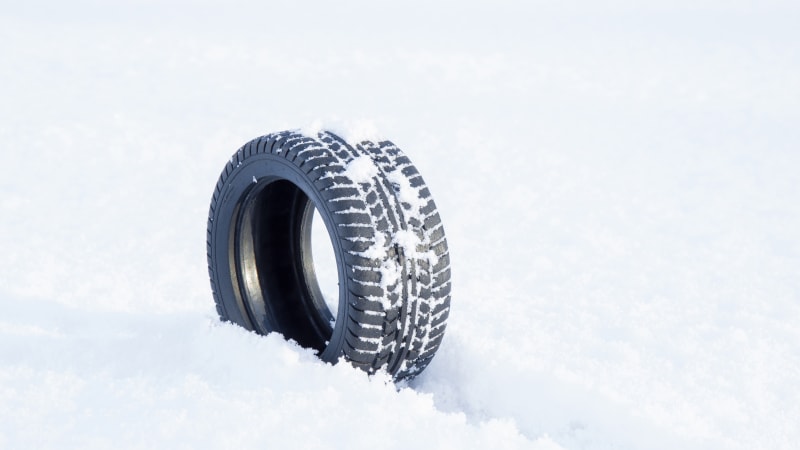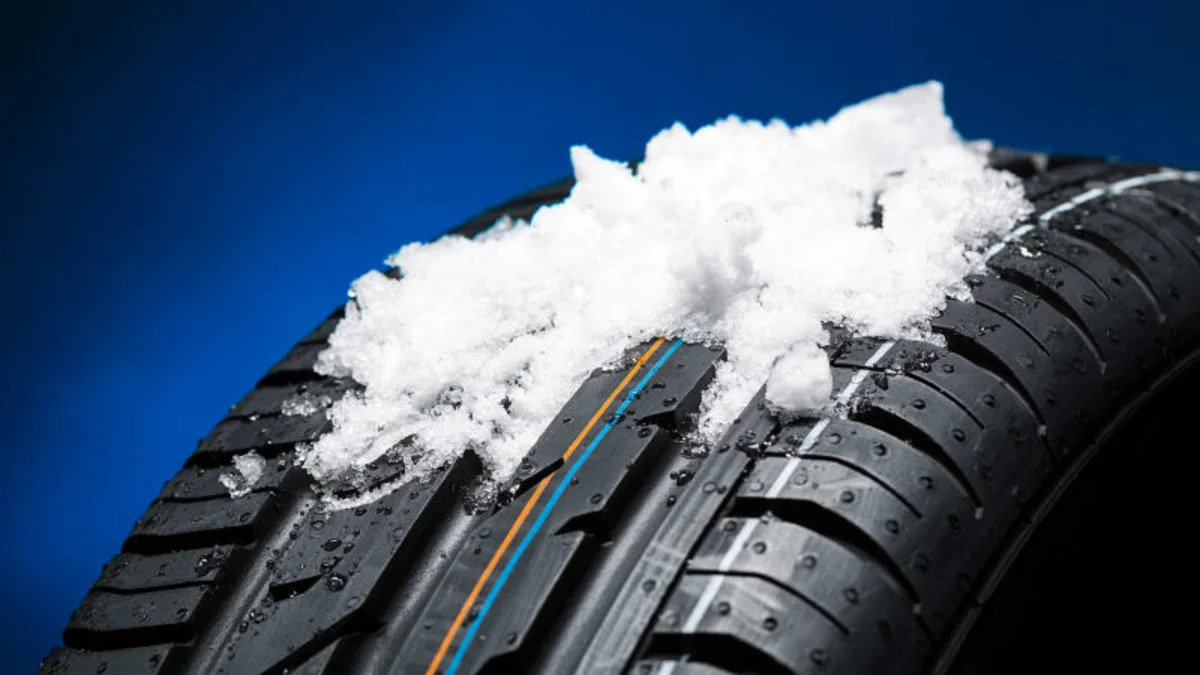If you live anywhere where it gets cold, and in particular where the roads are salted, you might store your sports car or classic vehicle over the winter. There are lots of things you can do to help make that go easier — sitting isn't great for machines to begin with — but let's focus first of all on the tires.
A few things kill tires. One is UV light, and another is sitting stationary in one spot. Chemicals, ozone, and cold temperatures also hurt tires. We'll cover why, and what to do about each aspect. The good news is, it's not terribly hard or expensive to do this correctly, if you have the space.

UV is a component of sunlight, and over time it can degrade the rubber compounds in the tires. This can lead to the sort of cracking and hardening that could lead to a blowout. It's commonly known as "dry rot" in tires. The good news is that it's easy to protect tires from it.
A thin plastic barrier is all you need. Slipping a contractor-sized garbage bag onto the tire and securing it with some tape works in a pinch. For tires stored off the vehicle, there are more substantial bags and totes you can buy. A garage with no windows to let in light is also sufficient to prevent UV damage.

Flat spots are at best an inconvenience that will rectify itself after driving around. But long-term storage could ruin your tires with permanent flat spots. Some of this depends on your tires; expensive, high-performance tires with softer compounds are more susceptible. Driving a car regularly keeps the tire nice and round, but that's not always possible.
The best solution is to remove the tires and wheels completely from the vehicle, and store them on their side in a warm, dry place. A finished basement or a temperature-controlled storage unit is ideal. If that's not possible, setting the car on jack stands to remove some pressure on the tires can help. You can also move the car around, or park on tire saver mats that help spread the load around and maintain tire shape.

Chemical fumes and electronics that produce ozone can also degrade your tires. Stacking them up next to your chemical storage area, or gas cans, in the garage probably isn't the best idea. Use common sense and make sure fumes and ozone can't get to your tires by either moving the tires, or moving the fume-producing problems.

You might think of cold temperatures as a sort of preservative, and while that's true with food, it's not at all with rubber. Winter tires and snow/ice-rated all-seasons are designed to remain flexible and happy at very low temperatures, but your high-performance tires really aren't. You shouldn't drive on extreme summer tires when it gets cold out for that reason alone, and you also shouldn't store your tires in places where it drops below freezing regularly. That cold can make some tire compounds brittle and contribute to dry rot and cracking. Take the tires inside, in a warmish place that's dry, and as noted above keep the sunlight off them.
Related Video:
A few things kill tires. One is UV light, and another is sitting stationary in one spot. Chemicals, ozone, and cold temperatures also hurt tires. We'll cover why, and what to do about each aspect. The good news is, it's not terribly hard or expensive to do this correctly, if you have the space.

Sunlight is the enemy
UV is a component of sunlight, and over time it can degrade the rubber compounds in the tires. This can lead to the sort of cracking and hardening that could lead to a blowout. It's commonly known as "dry rot" in tires. The good news is that it's easy to protect tires from it.
A thin plastic barrier is all you need. Slipping a contractor-sized garbage bag onto the tire and securing it with some tape works in a pinch. For tires stored off the vehicle, there are more substantial bags and totes you can buy. A garage with no windows to let in light is also sufficient to prevent UV damage.

Prevent flat spots
Flat spots are at best an inconvenience that will rectify itself after driving around. But long-term storage could ruin your tires with permanent flat spots. Some of this depends on your tires; expensive, high-performance tires with softer compounds are more susceptible. Driving a car regularly keeps the tire nice and round, but that's not always possible.
The best solution is to remove the tires and wheels completely from the vehicle, and store them on their side in a warm, dry place. A finished basement or a temperature-controlled storage unit is ideal. If that's not possible, setting the car on jack stands to remove some pressure on the tires can help. You can also move the car around, or park on tire saver mats that help spread the load around and maintain tire shape.

Avoid chemicals and ozone
Chemical fumes and electronics that produce ozone can also degrade your tires. Stacking them up next to your chemical storage area, or gas cans, in the garage probably isn't the best idea. Use common sense and make sure fumes and ozone can't get to your tires by either moving the tires, or moving the fume-producing problems.

Cold is not your friend
You might think of cold temperatures as a sort of preservative, and while that's true with food, it's not at all with rubber. Winter tires and snow/ice-rated all-seasons are designed to remain flexible and happy at very low temperatures, but your high-performance tires really aren't. You shouldn't drive on extreme summer tires when it gets cold out for that reason alone, and you also shouldn't store your tires in places where it drops below freezing regularly. That cold can make some tire compounds brittle and contribute to dry rot and cracking. Take the tires inside, in a warmish place that's dry, and as noted above keep the sunlight off them.
Related Video:


Sign in to post
Please sign in to leave a comment.
Continue